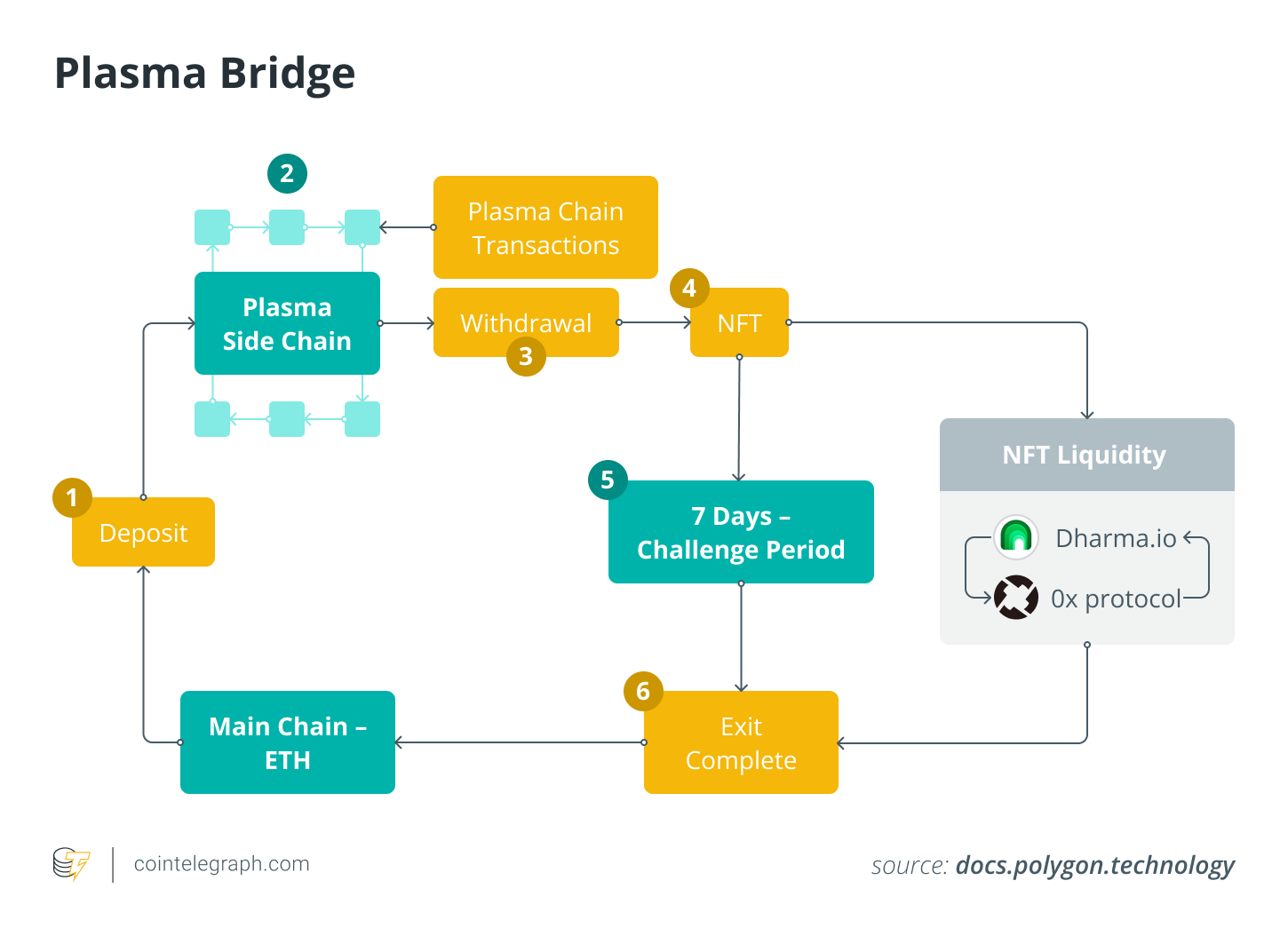
Introduction
Polygon is a popular chain known for having low gas fees. Gas fees are around 0.01$ at the time of writing. Polygon is both Ethereum Virtual Machine (EVM) compatible and a Layer 2 blockchain network based on Ethereum. This compatibility has allowed many dApps from Ethereum to support the Polygon chain. OpenSea, the biggest NFT marketplace, has supported the Polygon network for a long time. Polygon is also known by its old name of “MATIC” which is the name of the main token used for gas in the Polygon chain.
In comparison to Ethereum 1.0 which uses the PoW (Proof-of-Work) consensus mechanism, Polygon utilizes PoS (Proof-of-Stake) with its own set of validators independent from the main Ethereum chain. As Polygon is a Layer 2 network of Ethereum, Polygon syncs transaction states with the Ethereum chain to leverage the security level of Ethereum.
PoS (Proof-of-Stake) consensus is more gas efficient than PoW (Proof-of-Work). Combined with other optimization techniques, Polygon has reached a state where gas fees are low.
The example swap transaction example below shows the low gas fees on Polygon.

Why Polygon?
Polygon not only has a low gas fee but also has a thriving ecosystem. There are over 200+ protocols integrated with Polygon and more are added on a regular basis. This includes many, bridges, oracles, dApps, DeFi, components explorers, storage providers, and Web3 wallets. As Polygon is using PoS for its consensus mechanism along with other optimization techniques, Polygon reaches a state where transaction fees are low. With these low fees and growing ecosystems, Polygon has become a go-to place for developers to build their dApps.
Polygon is an EVM-compatible chain so developers can leverage their existing knowledge of Solidity language to develop on the Polygon chain.
From a user’s view, Polygon has a high level of accessibility because major centralized exchanges support depositing and withdrawal to the Polygon chain. Users can deposit their local currency such as USD or THB to a centralized exchange, swap to USDC, and deposit directly into the Polygon chain from their centralized exchange.
Development tools
Developers can use any development tools that are compatible with EVM as the Polygon chain is an EVM-compatible chain. Remix IDE is a tool that combines all required development tools into one. The Remix IDE interacts with and deploys smart contracts on both the Polygon testnet and mainnet without worrying about gas fees.
Remix IDE is a beginner-friendly tool. When working on more complex projects, Hardhat is more appropriate as it trades some simplicity for better scalability.
Some projects need to integrate with a tool or SDK that is only available on mainnet such as Rango Exchange SDK. In this case, Polygon is the best chain to experiment with because of the low gas fee.
Cross-chain interoperability
Polygon has two kinds of cross-chain interoperability: interoperability between chains that are sidechains of Polygon and between chains that aren’t sidechains of Polygon such as L1 chains. Polygon also has special permissionless and trustless bridges that bridge tokens from Ethereum to Polygon.
For cross-chain interoperability between non-sidechains, developers can use message passing services such as Axelar General Message Passing (GMP) to bridge DApps from other chains such as Ethereum to Polygon.
Cross-chain swaps and bridge services such as Rango Exchange, Anyswap (Multichain), Axelar Satellite, Connext Bridge (xPollinate), and Synapse Bridge bridge tokens to the Polygon chain.
For bridging ETH and Matic tokens to and from the Ethereum chain, Polygon introduced two special bridges called PoS Bridge and Plasma Bridge to bridge ETH and Matic tokens to and from the Ethereum chain in a permissionless and trustless way.



Polygon Plasma chains
Polygon has its own sidechain mechanism called Plasma chains that have improved security. A sidechain is a chain that can deposit and withdraw assets to and from the main Ethereum chain while having its own consensus mechanism. This creates an opportunity for attackers to attack the consensus mechanism and steal all money deposited into this sidechain or halt the deposit and withdrawal mechanism. Plasma chains solve this problem by saving block roots on the main Ethereum chain. Block roots act as proof that the state in the sidechain is valid and not manipulated by the attackers. Producing new transactions also needs to follow the rules used in the proof. Producing malicious transactions is almost impossible as they will be rejected.
Polygon Hemez (zkEVM)
Polygon has its own EVM-compatible zero knowledge rollup chain (zkEVM) called Polygon Hemez. Polygon Hemez provides high throughput of 2000 TPS, low transaction cost, Ethereum-level security guaranteed by zk-SNARKs, and data availability on the Ethereum mainnet.
Polygon Hemez utilizes zero knowledge technology to simplify consensus between Ethereum and the Polygon Hemez chain by creating a batch of transactions using zero-knowledge and submitting it to the Ethereum chain once per batch.

Expanding Ecosystem
Polygon is currently leading Ethereum layer 2 blockchains with the most diversity of DApps. Currently, 200+ DApps have deployed onto the Polygon chain. DApps on the Polygon chain are categorized into multiple categories including DEX, SocialFi, NFT, GameFi, Wallets, and more.
Polygon has an official dashboard for showing the available Polygon DApps and DefiLlama also has an available list.

Some DApps have special versions that are only available on the Polygon chain such as OpenSea. These versions have unique features that allow users to mint, list, sell and buy NFT without any gas fee.
Here are some examples of the best early adopters building on the Polygon network:
Lens Protocol
Lens Protocol is a leading Web3 decentralized social media platform. Lens is disrupting traditional social media platforms by developing a decentralized social protocol. Currently, more than 5000 users have adopted Lens Protocol.
Lens Protocol chose the Polygon chain as the main blockchain because of its low gas fee with thriving ecosystems. Combining these two points together, Lens can grow its user base quicker.
Lens Protocol has created Lenster, which provides a user-friendly interface for interacting with the Lens Protocol itself. Anyone that has used any of the popular social media platforms will find similar features
Developers can use the documentation on how to integrate the Lens protocol within their DApps.

QuickSwap
QuickSwap is a major DEX on Polygon chain with more than $200M TVL (Total value locked). QuickSwap uses an AMM (Automated Market Maker) algorithm to enable users to trade on particular tokens that have provided the LP (Liquidity Provider). You can also earn rewards by providing liquidity to QuickSwap liquidity pools.
To enable trading on Quickswap, developers must provide liquidity between your governance token and MATIC or a stable coin into Quickswap.

Curve Finance
Curve is a DEX that uses an AMM (Automated Market Maker) algorithm specialized for stablecoins trading and liquidity. Polygon is a chain that Curve is supported amongst other chains.
If you swap stablecoins on QuickSwap, you would lose 0.2% and a slippage fee. In contrast, while trading on Curve finance you only lose 0.04% and a much less slippage fee. You will see a significant difference if you perform larger stablecoin swapping orders.
OpenSea
OpenSea is a leading NFT marketplace on the Ethereum chain. But OpenSea also supports the Polygon chain and offers a different experience compared to the Ethereum chain version in terms of fees .OpenSea on the Polygon has free gas for all operations including list, buy, sell, and mint. This is done by utilizing a unique signature mechanism to let the user sign a transaction that doesn’t cost any gas fee and then execute the signed transaction using OpenSea’s relayer. OpenSea’s relayer is the one who pays the gas fees. But since the gas fees on Polygon are extremely low, OpenSea’s relayer can be operated indefinitely without running out of gas.
Developers looking to develop or learn about NFTs can use this opportunity to grow their learning and development in a thriving NFT ecosystem provided by Polygon and OpenSea.
Summary
Polygon network is a chain that has low gas fees with a thriving ecosystem. Developers can leverage existing knowledge of Solidity smart contracts to develop on Polygon as it is an EVM-compatible chain. Polygon has its own improved sidechain mechanism called Plasma chains that offer improved security compared to other sidechains. Polygon also offers its own EVM-compatible zero knowledge rollup chain (zkEVM) called Polygon Hemez. Developers can leverage interoperability services such as Axelar to pass messages from your DApps on other L1 chains such as Ethereum to Polygon chain to enjoy low gas fees and a growing developer ecosystem



